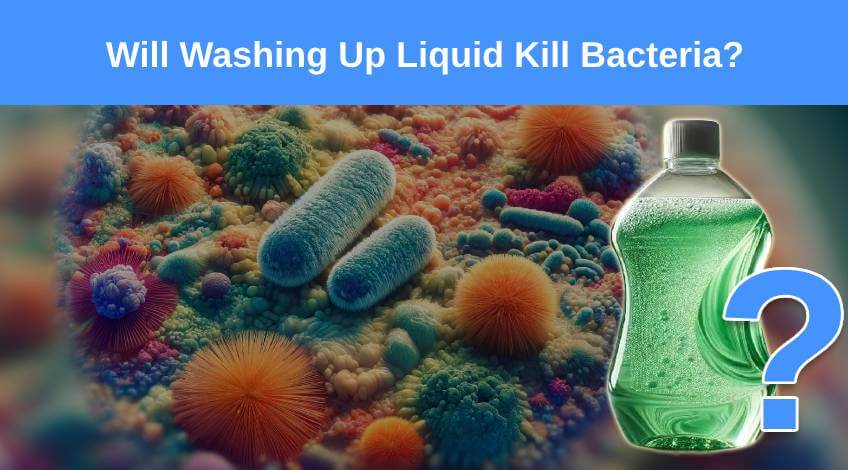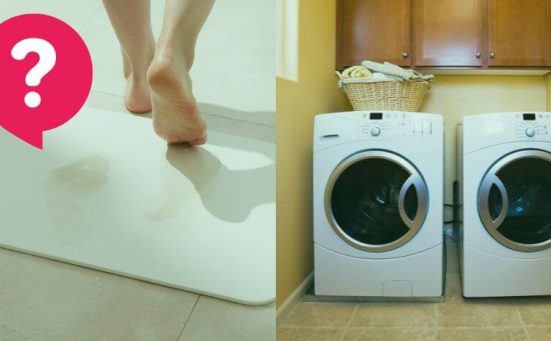
Will Washing Up Liquid Kill Bacteria?
When it comes to maintaining a clean and healthy home, the tools and products we use to clean our dishes are highly important to make the process easier and more effective.
After all, who wants to spend time and money on products that don’t work when you can use those that are guaranteed to make your home cleaner, safer, and comfier to live in for you and your household?
A common question that comes to mind is whether washing up liquid, the kind we use every day to clean our dishes, is effective at killing bacteria. The short answer to this is not necessarily, as washing up liquid alone does not kill bacteria – it is designed to remove grease and dirt. For disinfection, additional methods like proper scrubbing, using hot water, or using a washing up liquid with antibacterial properties are necessary.
Let’s learn more about washing up liquid, how it works, and additional tips to make your dishwashing routine more efficient in this article.
How Exactly Does Washing Up Liquid Work?
Washing up liquids are primarily designed to tackle grease and food residues on your dishes by breaking down the fats and oils that bacteria can feed on. This process, known as emulsification, helps in lifting these particles off the surfaces, making them easier to wash away with water. Although most washing up liquids are not antibacterial, they play a significant role in the removal of bacteria.

On the other hand, the act of scrubbing with a detergent solution physically removes many of the germs and bacteria from surfaces such as dishes, cutlery, and cooking utensils. This action, when combined with the rinsing stage, is very effective at reducing bacterial loads on your washing.
Using washing up liquid helps remove the environment where bacteria thrive, but it does not kill bacteria outright. However, the physical action of scrubbing with soap and hot water helps dislodge both dirt and microorganisms from surfaces, making it easier to rinse away.
How Scrubbing And Water Temperature Help Kill Bacteria
As mentioned earlier, while washing up liquid alone doesn’t kill bacteria, the physical act of scrubbing and the temperature of the water you use play crucial roles in making your washing more hygienic, hence, killing more bacteria.
Vigorous scrubbing with a brush or sponge increases the effectiveness of the cleaning agent, physically removing bacteria from the surfaces of dishes and cutlery.
Hot water is another important thing you need to consider. Water at a higher temperature can kill some bacteria and also help dissolve fats and oils more effectively, which can carry away bacteria.

For best results, water should be hot enough to touch but not so hot as to cause burns (around 60°C).
Are Antibacterial Washing Up Liquids Better?
Unlike the traditional washing up liquid, those that contain antibacterial properties are definitely better, especially if your goal is to kill the bacteria that’s on your dishes and cutlery.
Antibacterial washing up liquids contain additional chemical agents designed to kill bacteria. They can be more effective at sanitising dishes, especially if you leave the wash solution to sit on the dishes for a few minutes.
- Fairy 2x Professional Antibacterial washing Up Liquid 5Ltr.
- CLEANING_AGENT
In fact, there was a study done that showed that antibacterial washing up liquids are much better at reducing germs, by 98.5%[1]. This experiment took place in a restaurant for six weeks.
Of course, if you make use of a good scrubbing method and a hot water temperature, regular washing up liquids are enough to get the job done for most households. For those who own a commercial restaurant or are more concerned with bacteria though, spending more for an antibacterial washing up liquid is worth it.
TIP: When you’re handwashing your dishes using anti-bacterial washing up liquid, don’t forget to moisturise! The ingredients used in the soap can be very drying for your hands.
Tips For Your Next Dishwashing Routine
Now that you know the difference between using regular and antibacterial washing up liquid, you also deserve to know some bonus tips to enhance your dishwashing routine.
To maximise the effectiveness of your dishwashing routine, consider these:
- Pre-rinse dishes to remove large food particles before applying washing up liquid.
- Change your washing up water regularly to avoid washing dishes in greasy or overly dirty water.
- Use a brush or sponge for effective scrubbing, ensuring you reach all parts of your dishes.
- Rinse dishes thoroughly under hot water to remove any soap and loosened bacteria.
- Change your brush or sponge regularly. After all, bacteria can grow on their surface.
And finally, did you know that there are other ways to use washing up liquid in your home? You can even use it for:
- Stain Removal
Apply a small amount to clothing stains before washing. Its grease-fighting properties can help break down oily stains. - Window Cleaning
Just mix with water in a bottle spray for a streak-free window cleaner. - Pest Deterrent
A solution of washing up liquid and water can deter pests on plant leaves without harsh chemicals.
And there you have it! Washing up liquids are a staple in your kitchen, and you can always use them as a versatile product to maintain your home.
Although they are not that effective in killing bacteria on their own, using one with antibacterial properties and the right scrubbing and water temperature can certainly make a difference.
Do you have questions? How do you use washing up liquid in your home? Feel free to leave a comment below!
SEE ALSO: Can You Use Washing Up Liquid In The Washing Machine?
Frequently Asked Questions
Bacteria generally cannot survive in liquid soap because the cleaning agents within the soap disrupt the membranes of bacteria, effectively reducing their numbers. However, liquid soap is not inherently designed to kill bacteria unless it has specific antibacterial properties.
Washing up liquids that kill bacteria are those specifically labelled as antibacterial. These soaps contain chemical agents that are designed to kill bacteria and are more effective in sanitising dishes compared to regular washing up liquids.
Soaking in soapy water alone does not necessarily kill germs; it primarily helps loosen dirt and grease. For effective germ reduction, physical scrubbing and using hot water are recommended alongside the soapy water.
The most hygienic way to wash dishes is to use hot water, apply vigorous scrubbing with a brush or sponge, and use an antibacterial washing up liquid if necessary. It’s important to rinse the dishes thoroughly under hot water to remove any residual soap and bacteria.
It is best to avoid leaving dishes in the sink for more than a few hours. Leaving dishes longer can lead to bacteria growth and unpleasant odours. Regularly washing dishes shortly after use helps maintain a clean and hygienic kitchen environment.
Also, follow us on Pinterest ...




